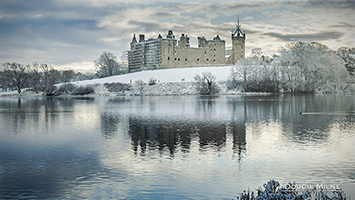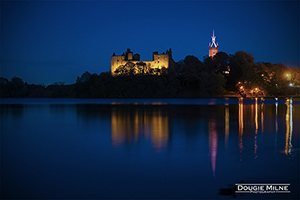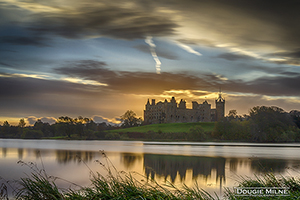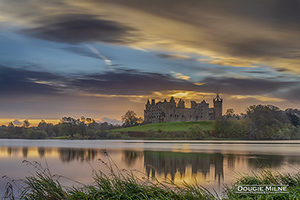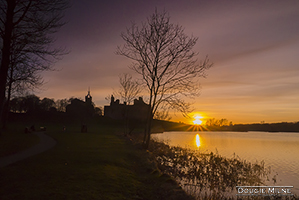Linlithgow Loch Wall Art
Before the Ice Age, the River Avon flowed through the spot where Linlithgow Loch is now situated, and on to join the Forth at Blackness. It was rediverted to Grangemouth by debris deposited by the ice as it melted and retreated. A large sheet of ice broke off and clay, sand and rock from the retreating glacier built up around it. When it melted, it formed a kettle hole - a hollow in the surrounding soil. The hole was filled with meltwater, creating the largest of only two natural lochs in the Lothians. The kettle hole gave the town its name: llyn - llaith - cau is Brythionic for 'loch in the damp hollow'. Despite being large, the loch is shallow, with an average depth of only 2.3 metres and a maximum depth of 9.2 metres. The northern shore along the loch is a designated site of special scientific interest. The oak, silver birch and beech that grow here are home to many species of birds, animals and insects. Foxes and badgers can sometimes be spotted. Dog rose, gorse and broom grow around the base of the trees, providing shelter for small birds to feed and nest. In the spring, the Loch itself is a favourite mating location for Great Crested Grebe. The meadow between the woods and the loch is home to butterflies and bees, to small mammals such as rabbits, mice and voles, and to brightly coloured flowers such as field scabious and tufted vetch. The Rickle and Cormorant islands can be seen on the loch. These are the remains of two 2000-year-old man-made islands which supported wooden houses, known as crannogs. These were probably built by important families for display and status, with the additional benefit that they were difficult to attack.

